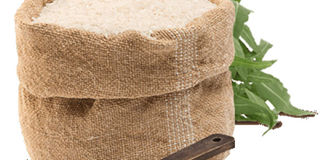Rice prices shoot higher

Patricia Nakabugo, a fresh food trader at Nakawa market, cannot remember the last time she had a meal of rice in her home.
This is because although her total daily earnings have remained the same prices of food stuffs have increased including rice, her favourite food.
She says food prices have hit the family so hard that it has become difficult, for her to feed her family, pay school fees and pay for her bus fare to and from Seeta, in Mukono District, where she lives.
The mother of four copes with the soaring inflation — which hit 6.68 per cent this year —by sacrificing rice meals in order to afford other family requirements and urgent demands.
“My family’s staple food has been rice and this would cost us about Shs3,000 per kilogramme but now to afford this we have to spend close to Shs5,000 for a kilogramme,” said Nakabugo.
“The Pakistan rice used to cost Shs3,000 up to the end of last year but in less than a year, it has gone up to Shs4000 while Super has gone up to Shs5,000 and is likely to increase further,” Nakabugo told Daily Monitor at her market stall in Nakawa.
She added that Kaiso which used to cost Shs3,200 has also gone up to Shs4,500 and that the prices keep rising.
With a severe drought late last year through to May this year, fuel prices and a weakening shilling forcing a steady rise in prices of basic commodities beyond the reach of the estimated 36 per cent, who live below the poverty line (spending less than $1 (Shs3,630 per day) — the pain of food prices has hit the poor hardest.
The rally in food prices has been attributed to the prevailing drought conditions coupled with the high taxes, transport costs and high charges from middle men.
Food and transport costs have a significant weighting in the basket of goods and services used to measure inflation, making them main drivers of inflation in Uganda.
Ibrahim Michael Okumu, an Economics lecturer at Makerere University says the high demand from both Uganda and other countries in the region like Kenya, Burundi, Rwanda and South Sudan is not being matched with the supply from farmers.
Big picture
Traders in Nakawa market have increased the price of beef to Shs10,000 up from Shs8,000 last year, Maize flour from Shs1,500 to Shs3,000 now in line with the cost of transporting the maize flour from rural areas to Kampala and costly maize, grinding costs, business taxes, rent, tomatoes and greens.
In Kamokya Market one of Kampala’s suburbs, Zubairi Magoola reckons that a kilogramme of rice is going for Shs4,000 up from Shs3,000 last year, a situation that has cut the flow of customers.
Magoola says that a walk around the market shows that most commodities have relatively increased in price compared to last year and adds they are likely to increase further.
Coping mechanisms
Magoola says that consumer goods companies are, therefore, expected to take the heat as households adjust their spending to prioritise essentials such as food and education ahead of clothes, drinks and beauty accessories.
The story is not any different in St Balikuddembe (Owino) Market although many think it’s one of the cheapest markets in Kampala, the vendors are sharing the strain of the economy.
John Kyambadde –a rice trader used to stock pile his stall with over six tonnes of rice but this has since reduced to almost half. “This is the highest food prices have gone in all the two-years I have been doing this business. Because of the high prices of rice I can no longer stock enough like I used to do a year ago,” he says.




